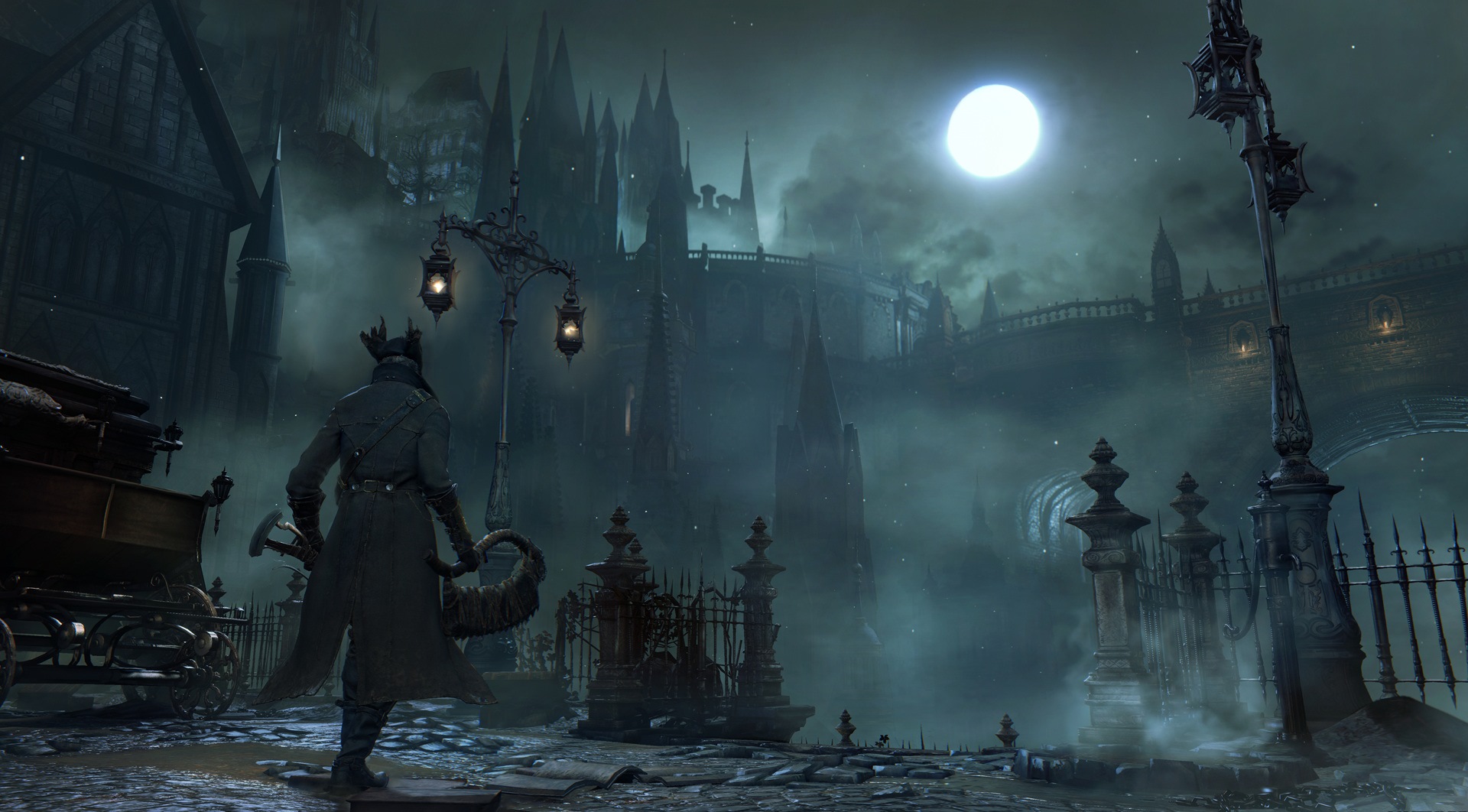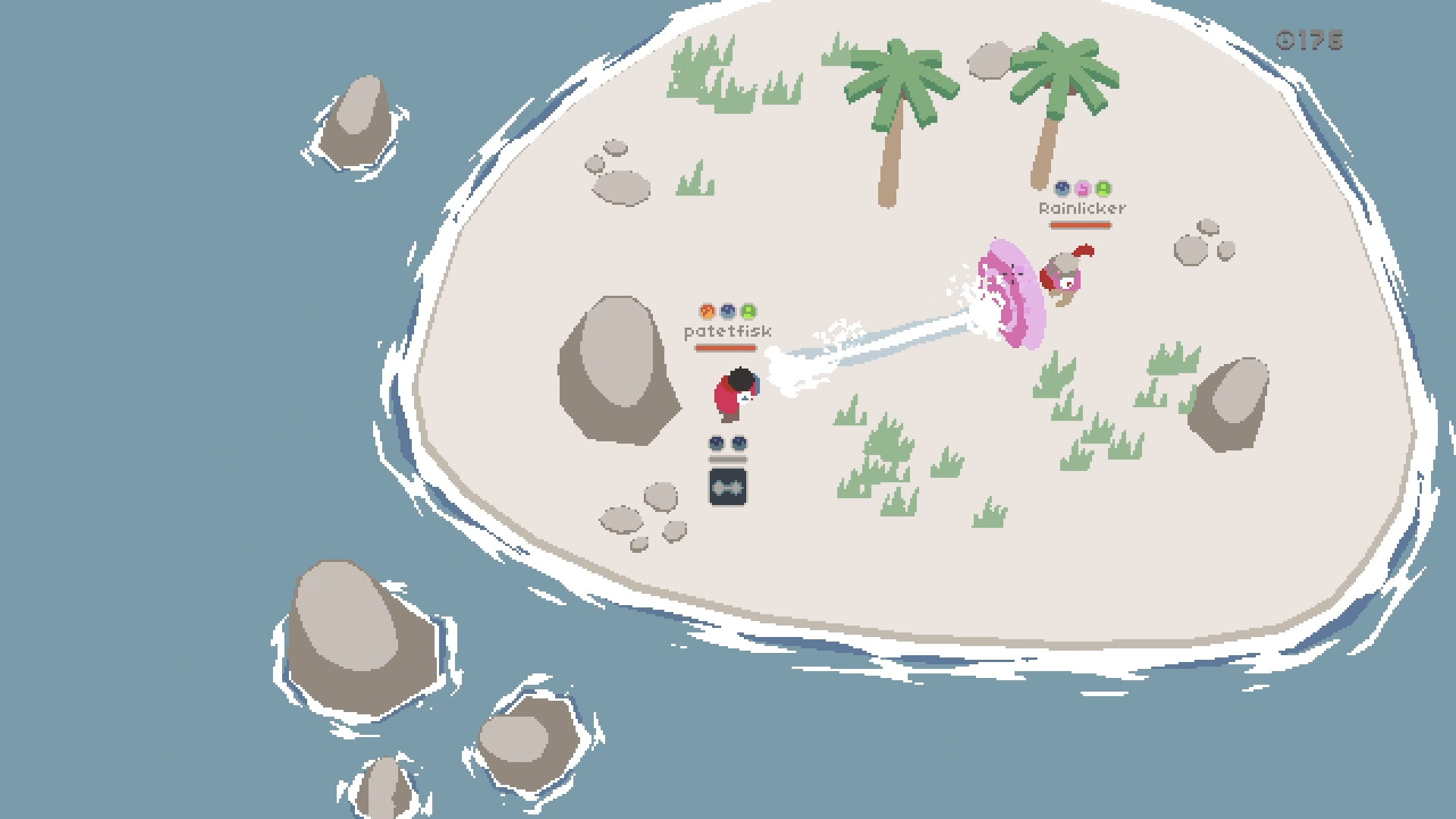Note: The images in this article are from the press kit for Bloodborne, and the game’s concept art. Capturing screenshots from Bloodborne is annoying, and I’m not sure that a bunch more images would do too much for this writeup.
I like Bloodborne. I think it’s very much worth playing. With that said, writing about Bloodborne is hard because there is so much that I could write about. Almost every aspect, from the technology, to the multiplayer, to the art, to the story, to the lore, to just the design and mechanics could have more than its own article.

This article will not be digging into any of those topics to the level they might deserve. My end goal for anything I write for Gametrodon is to convince you, the reader, that a game has something interesting about it that makes it worth playing and engaging with.
In the case of Bloodborne, the game is 6 years old, and exclusive to the last console generation on PS4. I don’t think it really needs someone to advocate that it’s a unique experience, or a good game. The world already knows that it’s both those things. So instead, I’m going to advocate playing the game for folks who might have thought about playing it, but were put off by the game’s somewhat notorious pedigree and difficulty curve. It’s an article directed at… well… me. Me from 70 hours of Bloodborne ago.
First, a little bit of history for those who might not be familiar with Bloodborne, or why the game has the reputation it does. Bloodborne is made by From Software. If you look them up on Wikipedia, you will see the following quote.
FromSoftware, Inc. is a Japanese video game development company founded in November 1986 and a subsidiary of Kadokawa Corporation. The company is best known for their Armored Core and Souls series, including the related games Bloodborne, Sekiro, and the upcoming Elden Ring, known for their high levels of difficulty.
Wikipedia
“Known for their high levels of difficulty” is the key phrase here. FromSoftware’s Dark Souls series is responsible for naming an entire genre, the “Soulslike” game, in the same way that we get phrases like “Metroidvania.” The “You Died” screen is infamous.
At least in my case, this reputation meant that I had almost no interest in any of their games, despite the fact that they are almost universally praised on every level. This is because I think I misinterpreted “Hard” as “Unfair.”

It is not very difficult to make a game that is very hard to beat. Two examples I can think of would be Kaizo mods/levels for Super Mario Games, and the “I Want To Be The Guy” series. In the case of Kaizo, the difficulty often comes from requiring both near perfect inputs and an absolutely massive chain of them, all while having an almost perfect knowledge of its game. On the other hand, “I Want To Be The Guy” simply puts the player into situations where without knowledge about what is going to happen, the player simply cannot succeed, such as platforms that move when you try to jump on top of them.
Bloodborne’s difficulty doesn’t come from anything like that. Bloodborne doesn’t rely on cheap shots or perfect mechanics to make things difficult. Instead, the difficulty comes punishing you heavily for mistakes or misplays. But almost every time I died, much like with Spelunky 2, I understood why I died. Bloodborne wants you win. It’s just not going to give it to you for free.
Here’s an example: in an area that feels about mid-way through the game, there’s a large rolling log trap that if it hits you, will pretty much just instantly kill you. While this might seem like bullshit, there’re a few important elements about the area that make me view it as incredibly smart game design instead. The first element is that the trap is located incredibly close to one of the game’s respawn points (lanterns), and after only two enemies, making it incredibly easy to get back to your corpse after the trap kills you. The second is that when you look at the area, you’ll see that the trap is actually only triggered when you run across a large button directly in the middle of the road.
This means that after you spot the trap, it’s very easy to avoid it, travel deeper into the marsh, and then get killed by a second trap that’s almost identical.
So why is this first trap important? Well, because to my mind, it’s actually very generous. While deaths in Bloodborne can be punishing, this one isn’t. The purpose of the log trap near the respawn point isn’t to unfairly kill the player, it’s to introduce the concept of the trap to the player, to show the player what it looks like, what happens when they trigger it, and to warn the player that this is an element that might still be encountered farther on. In essence, it’s actually functioning as a tutorial.
The same is true of many of the enemies. Some of the enemies that can combo you to death are first encountered in areas that are either actively detrimental to the enemy, or very near respawn points. And for almost all enemies in the game, choosing to run away and simply not fight them is an entirely valid option.
Bloodborne is not unfair. It asks you to think, and to actively work to defeat it, but it’s rooting for you the whole time. If the pedigree and rumors have made you skip it, or some of the other games made by FromSoftware, I urge you to reconsider. Bloodborne is incredibly satisfying, and worth playing, and if you persevere, you can and will beat it.
And the sun will rise.

Author Note: A brief story for those that aren’t convinced. After beating Bloodborne, I found myself wondering if I’d actually gotten better at the game, or if the game’s small incremental stat buffs, weapon improvements, and other systems had made it so that I eventually made progress without improving. So I made a brand new character with the lowest stats, didn’t take any of the free weapons offered, and replayed the first portion of the game.
A section that took me about 8 hours initially only took me 2 hours with the new character. Two bosses that initially took me over 10-15 tries each took only 3 tries each with this incredibly weak character, and I was using a garbage weapon that I found on the ground and I’d never used prior to this run.









